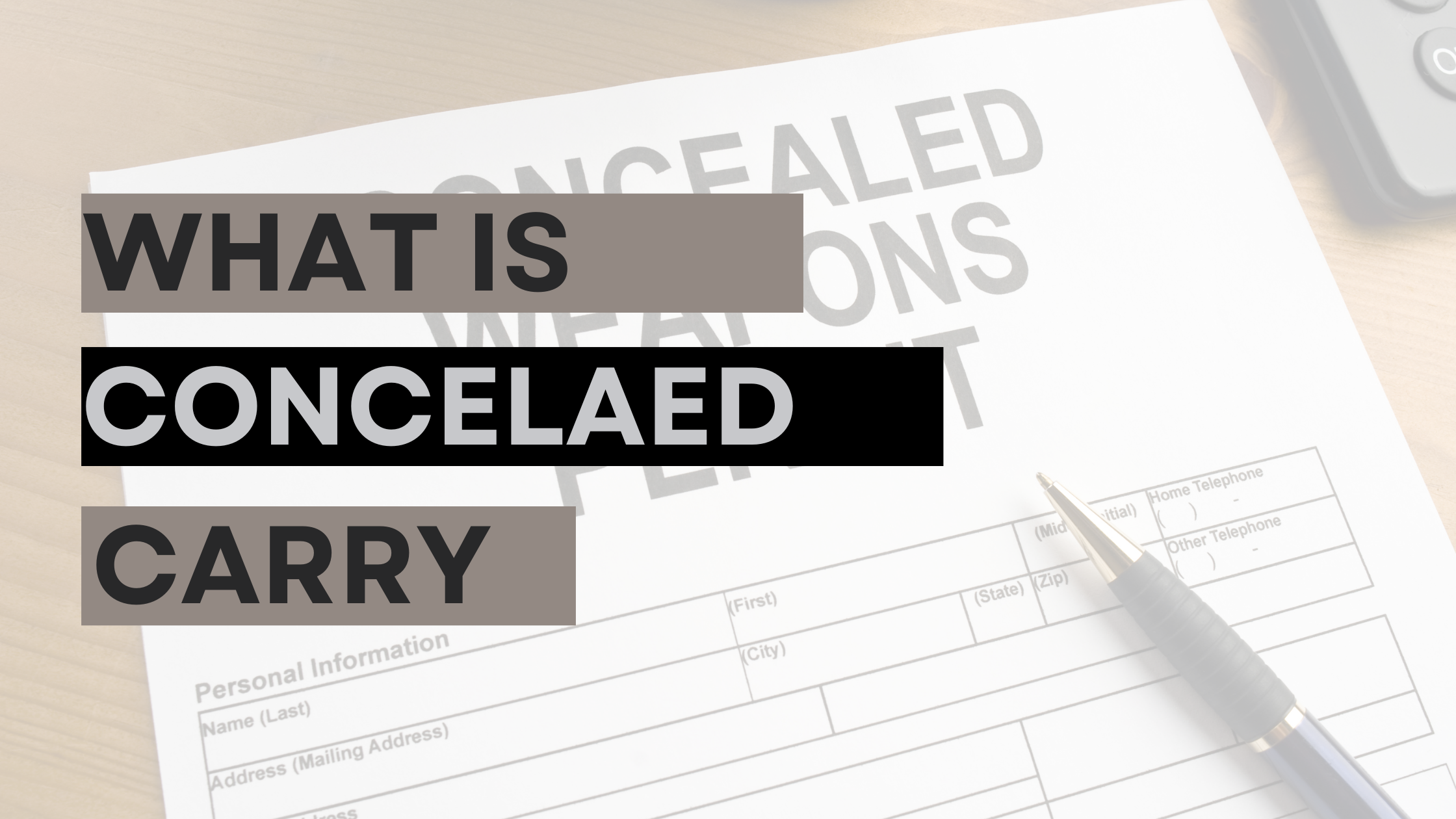What is Concealed Carry Introduction
Imagine being prepared to protect yourself and your loved ones at any moment. That’s the essence of concealed carry. Whether you’re new to the concept or just brushing up, understanding what concealed carry means is essential for responsible gun ownership and personal safety.
In this guide, we’ll break down the basics of concealed carry, why it matters, and what you need to know to carry responsibly.
What Does Concealed Carry Mean?
Concealed carry refers to the practice of carrying a firearm, typically a handgun, in a hidden or discreet manner. This could mean carrying your weapon under your clothing, in a concealed holster, or in a purse or bag specifically designed for concealed carry.
Learn more about the meaning of concealed carry.
Key points to remember:
- Discretion is Key: The firearm should not be visible to others.
- Legality Varies: Laws governing concealed carry differ by state, so it’s essential to understand your local regulations.
- Purpose: Concealed carry is primarily for self-defense, allowing law-abiding citizens to protect themselves in public spaces.
Why Do People Choose to Conceal Carry?
The decision to carry a concealed weapon often stems from a desire for safety and preparedness. Here are a few common reasons:
- Self-Defense: The most obvious reason is to be ready to defend oneself or others in life-threatening situations.
- Protection of Loved Ones: Many carriers prioritize the safety of their families.
- Deterrence: The presence of a concealed weapon (even if not visible) can discourage potential threats.
- Exercising Rights: For many, concealed carry is about exercising their Second Amendment rights.
Who Can Conceal Carry?
Not everyone can legally carry a concealed weapon. Eligibility often depends on factors such as:
- Age Requirements: Most states require carriers to be at least 21 years old.
- Background Checks: A clean criminal record is usually necessary.
- Training: Some states mandate firearms safety training or a concealed carry course.
- Permits: While some states allow permitless carry (constitutional carry), others require a permit.
For a deeper dive, check out our blog on Who Can Carry a Concealed Weapon?
How is Concealed Carry Different from Open Carry?
Understanding the difference between concealed and open carry is crucial:
- Concealed Carry: The firearm is hidden from plain view.
- Open Carry: The firearm is visible to others and typically carried on the hip or another obvious location.
Some states allow both practices, but the rules and cultural norms surrounding each can vary widely.
What You Need to Start Concealed Carrying
- A Reliable Firearm: Choose a handgun that’s easy to conceal and fits your needs.
- A Quality Holster: A comfortable and secure holster is essential for safe and effective concealed carry.
- Knowledge of Local Laws: Stay informed about your state’s concealed carry regulations.
- Training and Practice: Regular training helps ensure you’re prepared to handle your firearm safely and effectively.
Conclusion
Concealed carry empowers responsible gun owners to protect themselves and others while navigating public spaces with confidence. However, it’s not just about carrying a weapon; it’s about doing so safely, legally, and ethically.
Now that you understand the basics, explore our blog on What Concealed Carry Permit to Get to take the next step in your concealed carry journey. Remember, carrying concealed is not just a right; it’s a responsibility.

